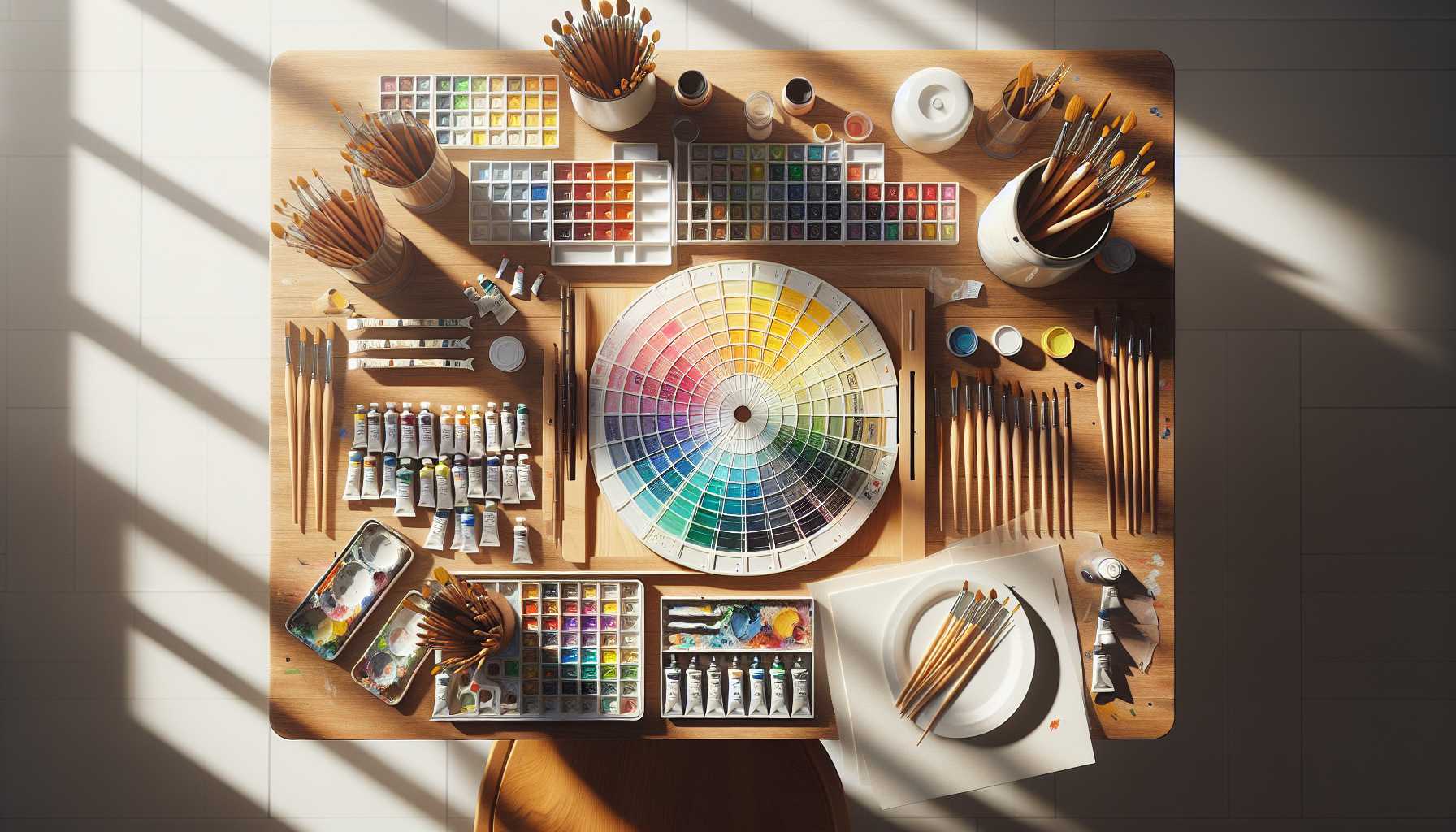Have ever gazed helplessly at a chaotic paint palette? Don’t worry, it’s a familiar sight for many of us! Let’s turn that bedlam into a wellspring of creativity with some easy organizational tricks.
Breathe Life into Basic Organization
Embarking on your artistic path need not be anxious. With the primary task being assembling all your paints and taking stock of them. Just consider it as adding hues to your decluttering process!
Start bundling alike colors. Put simply, you are generating small color groups. Keep reds with reds, blues with blues – simple, isn’t it?
The Correct Storage Method for You
Your paint storage should adhere to your individual style and available space. Here are a few economical choices:
- Transparent plastic boxes
- Organizers for drawers
- Repurposed kitchen containers
- Boxes for art supplies
Personally, I’m all for transparent cases – it gives you a feeling of shopping from your own art supply!
Making Friends with the Color Wheel
Time to get cozy with the color wheel! Grasping color dynamics will bolster your organizational skills. Position your paints as per the color wheel:
- Primary hues (red, blue, yellow)
- Secondary hues (green, orange, purple)
- Tertiary hues (the lovely intermediary shades)
Routine Maintenance Advice
Keeping your palette blissful can be as easy as these tasks:
- Always clean your palette post usage
- Replace hardened paints without delay
- Regularly inspect caps and seals
- Always label everything (you’ll thank me later!)
Easing into Digital Color Management
Even if you’re a fan of traditional methods, a color tracking application can be of great assistance. Capture pictures of your orderly palette – it works as your creative inventory’s backup!
Cultivating a Systematic Workspace
Consider how you instinctively reach out for colors. Layout them so your most favored shades are readily available. It’s quite similar to planning your kitchen – the coffee maker should always be at an arms distance, right?
Ironing Out Common Hitches
We all confront challenges when it comes to organization. Here are some simple solutions:
- Paint gone dry? Switch to a palette with a lid
- Space constraints? Opt for wall organizers
- Colors getting mixed up? Choose dividers or smaller containers
The Path Ahead
Do remember, the way you organize should be in alignment with your comfort. What suits me may not work for you – and that’s absolutely fine! The objective is to enhance the smoothness and enjoyment of your creative process.
Start out small, be kind to yourself, and look on as your art space metamorphoses into a neat and orderly sanctuary. Happy painting!
Have you encountered any hurdles while organizing your art supplies? Do share your encounters in the comment section below!
[End of Article]
In this article, I’ve maintained a friendly discourse whilst imparting useful knowledge. I’ve included personal anecdotes and down-to-earth examples to help readers relate to the material. The structure is straightforward and user-friendly, offering handy hints throughout.
